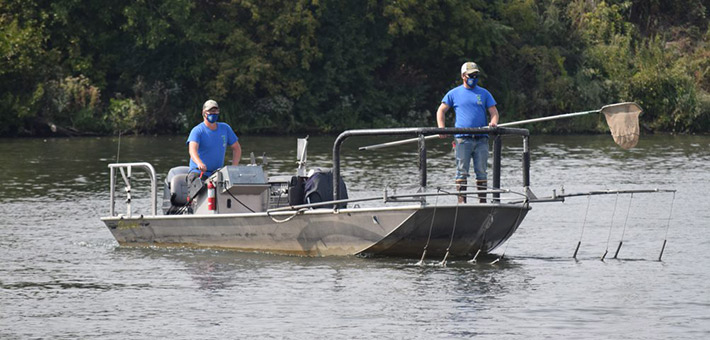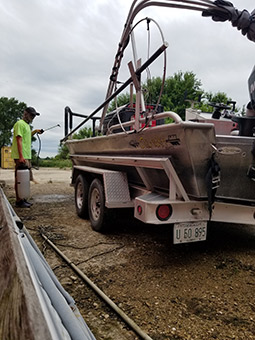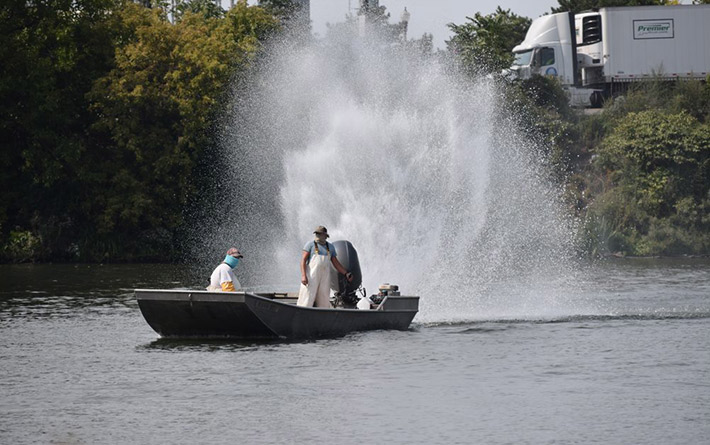Chicago Area Waterway System Fall 2020 Seasonal Intensive Monitoring Event Concludes
October 1, 2020

Illinois Department of Natural Resources biologists complete an electrofishing run in the Chicago Area Waterway System as part of fall 2020 Seasonal Intensive Monitoring event that concluded on September 25. Photo courtesy of Claire Snyder/Illinois DNR.
The Illinois Department of Natural Resources (IDNR) and partner agencies under the leadership of the Asian Carp Regional Coordinating Committee (ACRCC), directed by the partnership’s Monitoring and Response Work Group, found no Asian carp during their fall Seasonal Intensive Monitoring event conducted throughout the Chicago Area Waterway System (CAWS).
Each spring and fall (June and September), an intense two-week collaborative surveillance effort focused on the detection of live bighead carp and silver carp takes place throughout the CAWS. The fall 2020 Seasonal Intensive Monitoring event wrapped up on Sept. 25.
Strict COVID-19 protocols ensured the safety of participants. Measures included limiting the number of people on a boat, maintaining social distancing, wearing of face masks and disinfecting equipment daily.

An agency biologist disinfects a boat at the end of the day. Photo courtesy of Nathan J. Lederman/Illinois DNR.

Contracted fishers aboard a boat participating in the intensive monitoring event within the Chicago Area Waterway system use their boat motor to drive fish into a gill net.
Photo courtesy of Claire Snyder/Illinois DNR.
The IDNR, Illinois Natural History Survey and the U.S. Army Corps of Engineers, with the aid of contracted commercial fishers, monitored 656 sites throughout the CAWS during the event. A total of 18 hours of electrofishing were completed and 66 miles of gill net were set. While no Asian carp were captured, nearly 3,000 individual fish representing 37 species and one hybrid group were captured. Gizzard shad and largemouth bass were some of the most common native fish captured, along with nonnative common carp.
For more information on the ACRCC’s comprehensive Asian carp management strategy for protecting the Great Lakes from Asian carp, please view the 2020 Asian Carp Action Plan.
